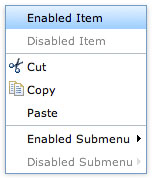Adaptive Images
The landscape of web continues to change as we get more and more devices that we need to support. One concern when creating websites that should accommodate all screen sizes is image size. The acceptable size for an image is not the same across devices, so we usually end up compromising image size and quality on all devices; not the optimal solution, of course. Enter a solution called Adaptive Images, a PHP / .htaccess based solution for detecting screen size and delivering optimally sized images for the user's device.

Adaptive images provides an outstanding set of instructions for customizing the images generated by PHP's GD library, so you aren't stuck with rubbish images. Do yourself a favor and check out Adaptive Images -- it could be the perfect solution for your website imagery needs.
![39 Shirts – Leaving Mozilla]()
In 2001 I had just graduated from a small town high school and headed off to a small town college. I found myself in the quaint computer lab where the substandard computers featured two browsers: Internet Explorer and Mozilla. It was this lab where I fell...
![5 HTML5 APIs You Didn’t Know Existed]()
When you say or read "HTML5", you half expect exotic dancers and unicorns to walk into the room to the tune of "I'm Sexy and I Know It." Can you blame us though? We watched the fundamental APIs stagnate for so long that a basic feature...
![Create a Context Menu with Dojo and Dijit]()
Context menus, used in the right type of web application, can be invaluable. They provide shortcut methods to different functionality within the application and, with just a right click, they are readily available. Dojo's Dijit frameworks provides an easy way to create stylish, flexible context...
![Element Position Swapping Using MooTools 1.2]()
We all know that MooTools 1.2 can do some pretty awesome animations. What if we want to quickly make two element swap positions without a lot of fuss? Now you can by implementing a MooTools swap() method.
MooTools 1.2 Implementation
MooTools 1.2 Usage
To call the swap...






This is the next BIG thing … I believe!
Will this method work with Joomla CMS sites?
It should — you’ll need to do your research about .htaccess though to make sure you don’t break Joomla.
One thing I noticed with this… it says the page loads a tiny bit of JavaScript first and creates a cookie with window size. That cookie is not going to be able to be read until the second page load. So this idea won’t work for the first time a visitor sees your site. Am I wrong?
You’re wrong ;)
If you include the script from an external file you’re right – because the time taken to fetch the external file is more than it takes to continue loading the HTML. But, if you have the code in the head (it’s only one line, and is more efficient embedded anyway), then the cookie actually gets set immediately, before the rest of the HTML has finished being loaded.
Try it – go visit http://adaptive-images.com on a large screen. If you see large images it worked, because if there isn’t a cookie set it delivers the mobile resolution, which are much smaller.
Here an alternative solution for adaptive images: http://litesite.org/holygrail/stage2/